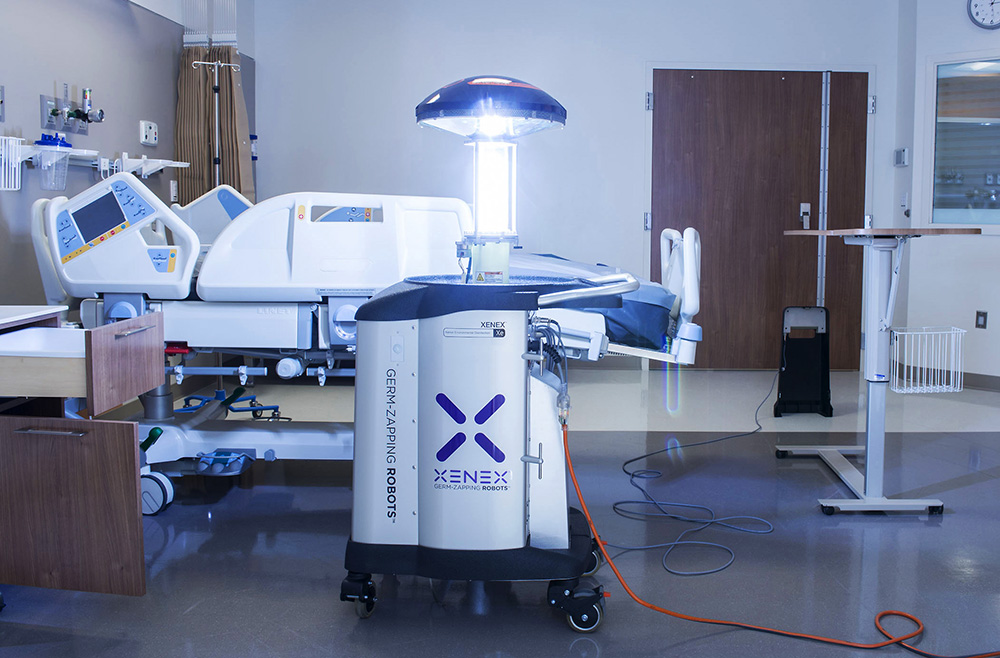
What You Should Know:
– Xenex Disinfection Services has announced the 5-year renewal of its U.S. General Services Administration (GSA) contract, which enables federal agencies (including Veterans Affairs and U.S. Department of Defense healthcare facilities) to easily deploy Xenex’s powerful LightStrike™ room disinfection technology.
– In addition to federal agencies, the GSA contract supports the procurement needs of eligible state, local, territorial, and tribal governments (including schools).
The Need to Disinfect
Studies show that less than half the surfaces in a patient room are disinfected when it’s being cleaned and prepared for the next patient. Pathogens such as Clostridium difficile(C.diff), methicillin-resistant Staphylococcus aureus (MRSA), Acinetobacter, and Candida auris that may be left behind on high-touch surfaces can transmit from patient to patient or patient to healthcare worker. Some deadly superbugs are showing resistance to cleaning chemicals, making the pathogens even more difficult to remove.
LightStrike Germ-Zapping Robots™, which first became available via GSA contract in 2012, provides a fast and effective way to disinfect healthcare facilities. More than 130 government healthcare facilities including VA, Army, Navy, Air Force, and Marine Corps hospitals use Xenex LightStrike robots for daily room disinfection. In 2012, the W. G. (Bill) Hefner VA Medical Center in Salisbury, NC was the first VA hospital to deploy four LightStrike robots and today utilizes its 11 LightStrike robots to disinfect ORs, ICUs, patient rooms, the Emergency Department, catheterization lab, oncology, dialysis, public restrooms and much more.
The LightStrike robot utilizes intense bursts of pulsed xenon ultraviolet (UV) light to quickly deactivate viruses, bacteria and spores on surfaces and is effective against even the most dangerous superbugs and multi-drug resistant organisms, including MRSA, C.diff, and SARS-CoV-2 (the virus that causes COVID-19). Additionally, the LightStrike robot has been proven effective against both the Ebola virus and Anthrax and can easily be incorporated into a facility’s biodefense strategy.
“There’s never been a more important time to have a disinfected environment. Viruses and bacteria are becoming resistant to chemicals, antibiotics and even some hand sanitizers. We are honored to be part of the disinfection strategy for the VA and DOD hospitals using LightStrike robots for room disinfection. Protecting the environment for those who protect us every day is an honor and we are committed to helping our government customers every step of the way,” said Joe Monroe, vice president of U.S. sales for Xenex.
Scientific Validation and Environmental Protection for Government Facilities
More than 45 peer-reviewed studies have been published validating the efficacy of LightStrike technology. The Central Texas Veterans Healthcare System is a pioneer in the utilization of UV technology for room disinfection and has conducted numerous studies about LightStrike pulsed xenon UV robots. One study published in the American Journal of Infection Control indicates that pulsed xenon-based ultraviolet light systems effectively reduce aerobic bacteria in the absence of manual disinfection.
Xenex robots are designed and manufactured in the U.S. and use pulsed xenon lamps (not mercury bulbs) to generate broad spectrum UV light. The robots don’t require warm-up or cool-down time, and don’t harm surfaces or expensive hospital equipment like mercury lamp UV products. In 2009, the U.S. Department of Energy issued an Executive Order for federal agencies to become more protective of the environment in practices including the use of non-toxic or less toxic alternatives when possible where these products meet the performance requirements of the agency.
